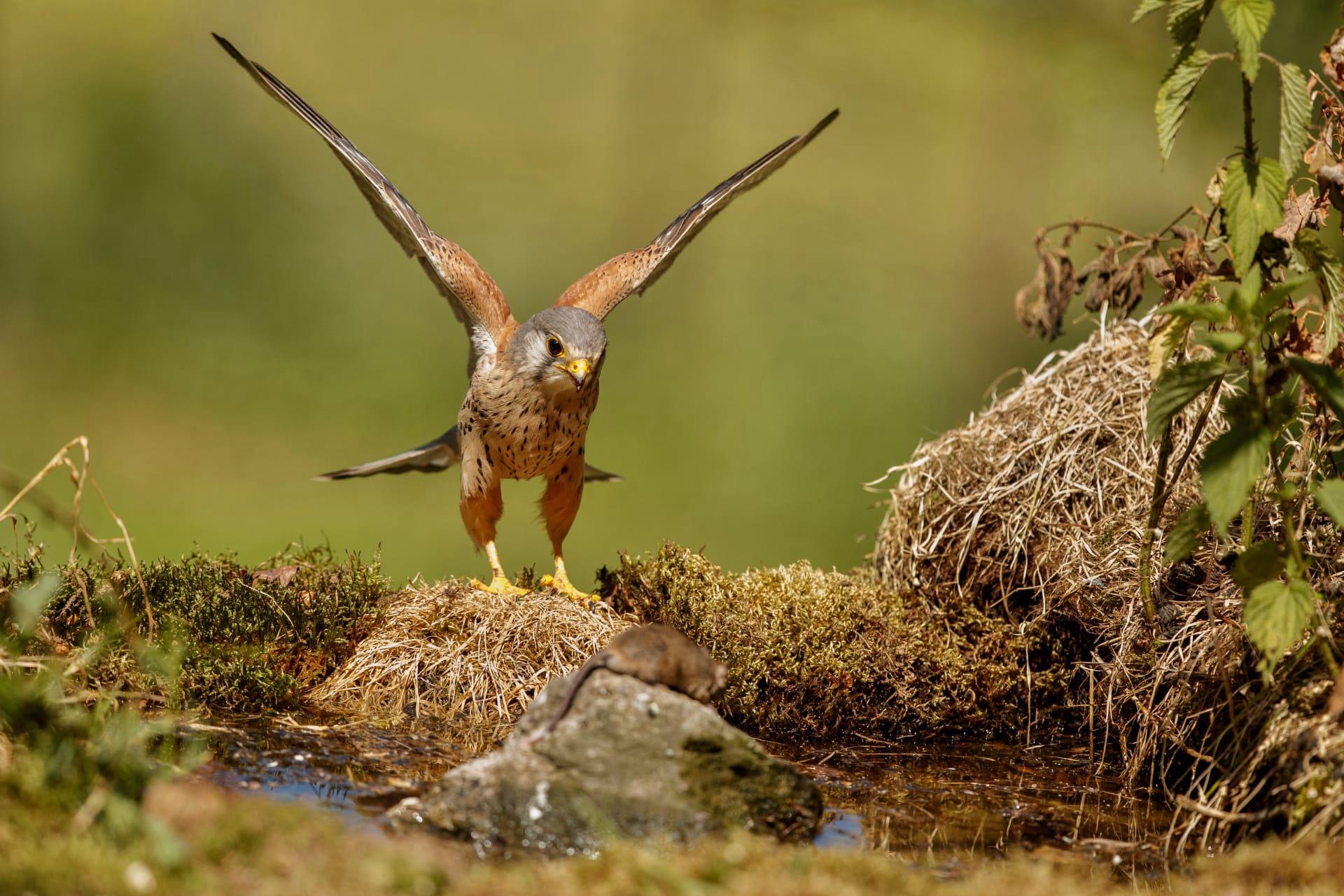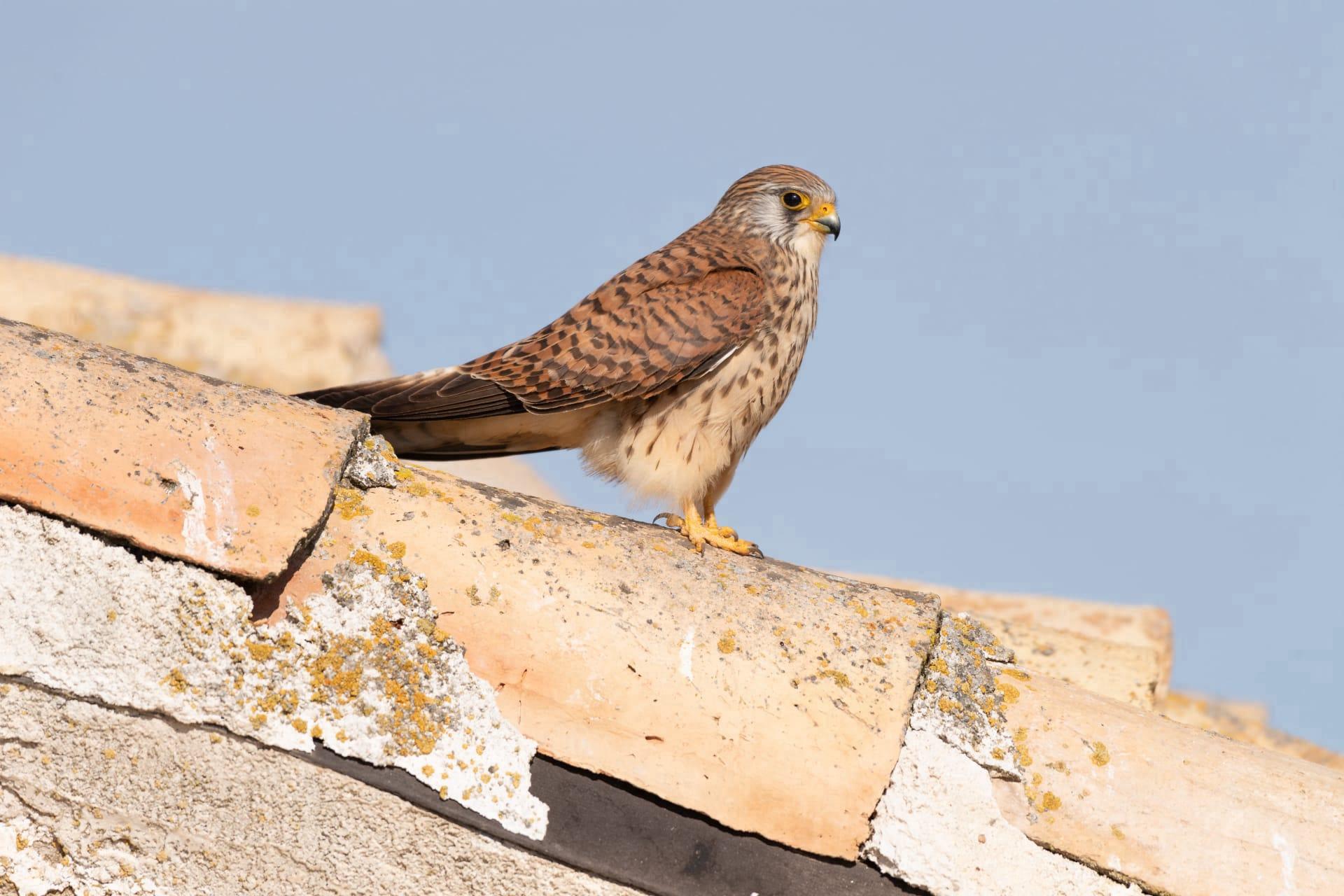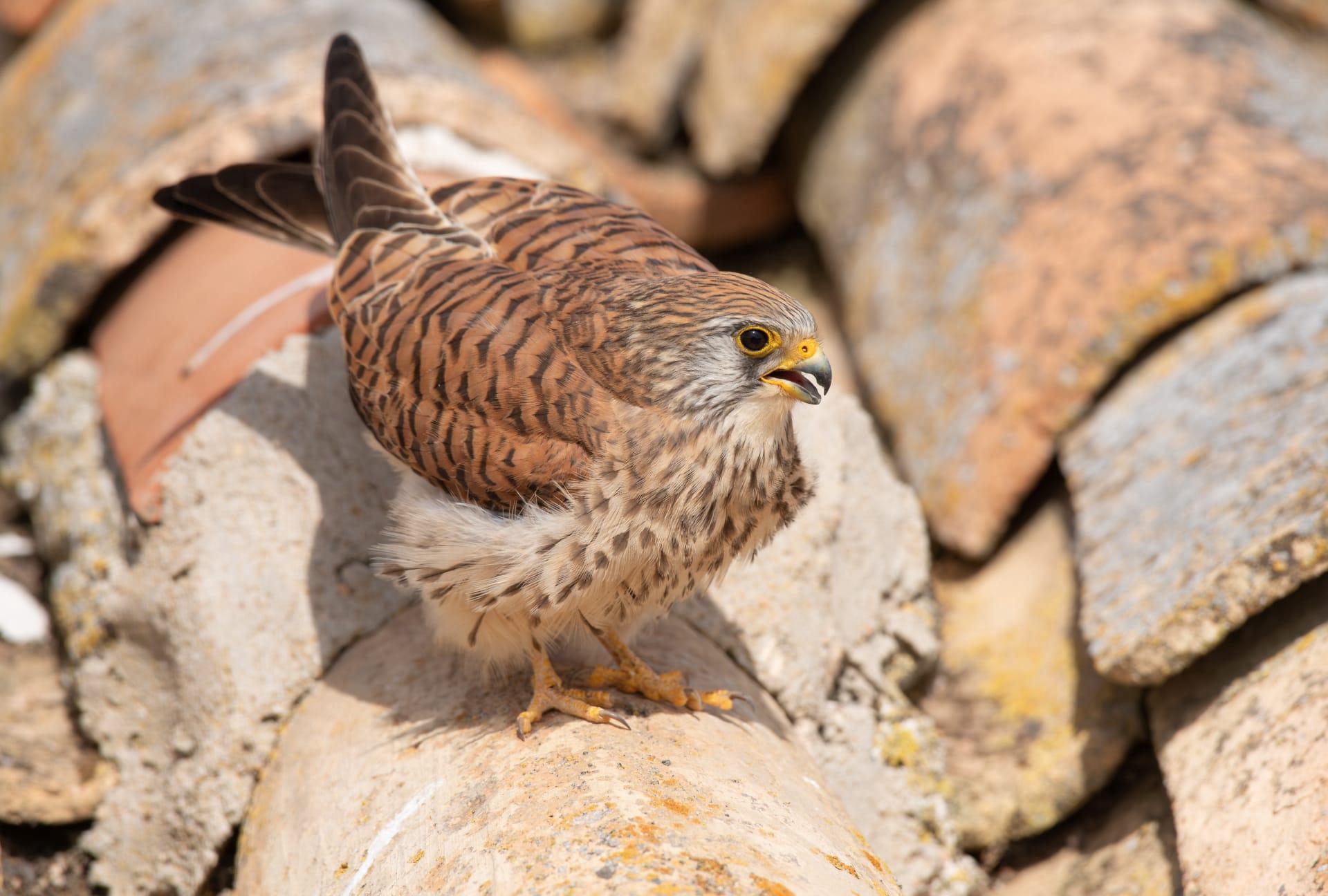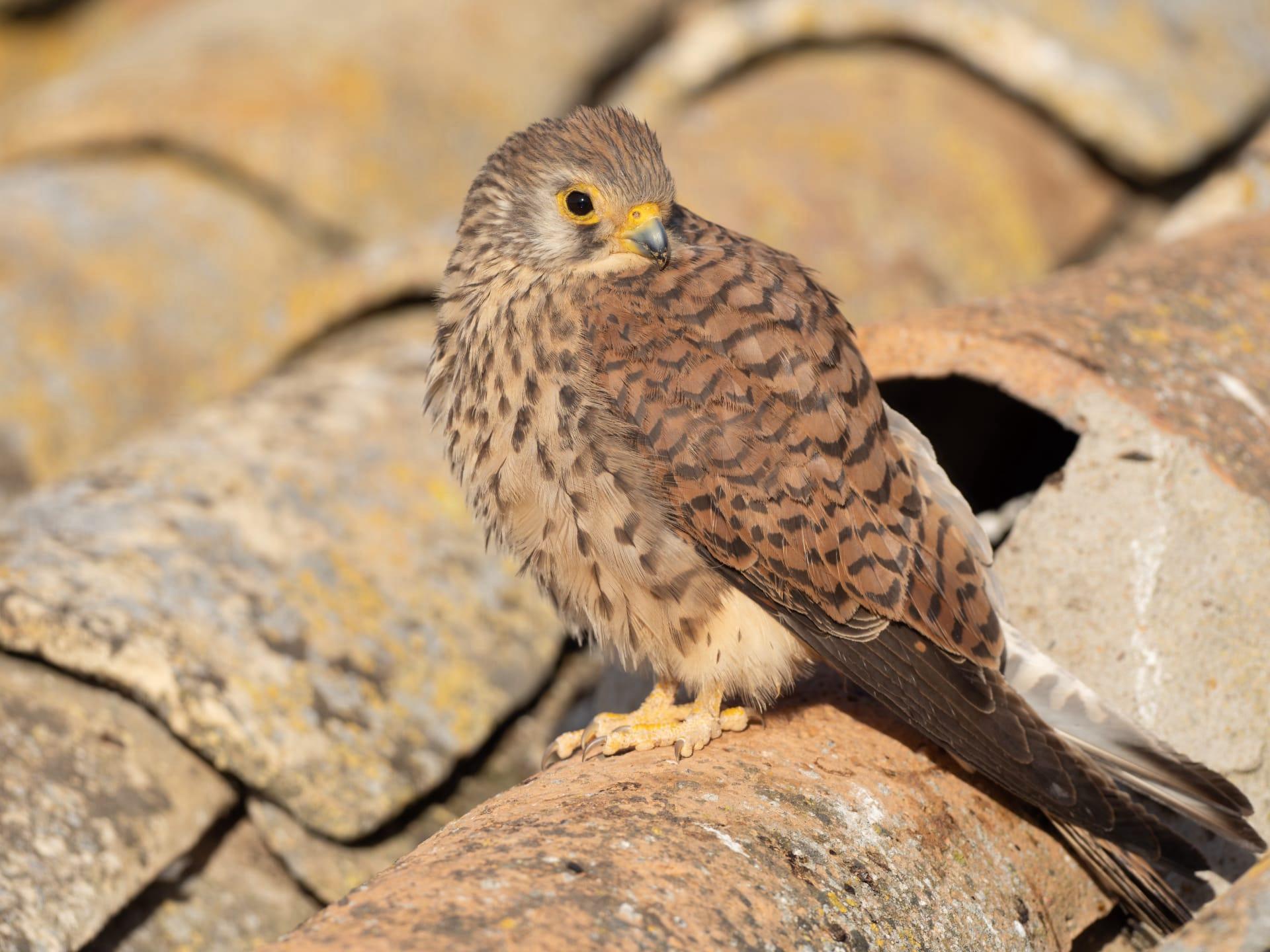1
Kestrels, often known as "sparrow hawks," are fascinating for their unique hunting method. Unlike many birds of prey, kestrels don't rely solely on the element of surprise. They utilize a technique known as "hovering," where they beat their wings rapidly to stay in place mid-air, scanning the ground for prey. This ability is enhanced by their sharp vision, which allows them to spot small rodents from a height of up to 100 feet. This hovering technique, combined with their keen eyesight, makes them efficient hunters in open fields and grasslands.
Kestrels have an extraordinary ability to see ultraviolet (UV) light. This adaptation is particularly useful in tracking down voles, their preferred prey. Voles leave urine trails that reflect UV light, invisible to the human eye but glowing like neon signs to a kestrel. This UV vision guides kestrels to areas of high vole activity, significantly increasing their hunting success. Such a skill highlights the kestrel's evolutionary adaptations for survival and predation in their natural habitat.

2
Another intriguing aspect of kestrels is their role as a natural pest controller. In agricultural areas, they help manage rodent populations, making them a farmer's ally. Their diet primarily consists of mice and voles, which are known to damage crops. By controlling these rodent populations, kestrels indirectly contribute to higher crop yields and reduced need for chemical pest control. This ecological service showcases the importance of kestrels in maintaining balance in agricultural ecosystems.
Kestrels are also known for their distinct plumage and size dimorphism. Male and female kestrels display different color patterns, making them one of the few raptor species where sexes can be easily distinguished. Males typically have gray-blue wings and a rusty-red back with black barring, while females have an overall brownish tone with black streaks. In terms of size, females are about 10-15% larger than males, a trait common in birds of prey, which provides females with an advantage in protecting eggs and nestlings.

3
The nesting habits of kestrels are quite unique. They don't build their own nests but rather utilize existing cavities like tree hollows, rock crevices, or even man-made structures like building ledges or nest boxes. This adaptability in nesting sites is a key survival trait, allowing them to thrive in a variety of environments. Furthermore, kestrels are known to use the same nesting site for several years, often returning to the same spot if it proved successful in the past.
Kestrels have a distinctive flight pattern. When flying, they often beat their wings rapidly and then glide, creating a pattern of flapping and gliding. This technique, known as "flap-gliding," is energy-efficient and allows them to cover long distances while searching for food. This flight style is also a display behavior during the breeding season, where males perform aerial displays to attract females. These displays include dives, rolls, and hovering, showcasing the male's agility and strength.

4
Kestrels are known for their remarkable adaptability to urban environments. In cities, they often nest on tall buildings, taking advantage of the height to scout for prey and avoid ground-level predators. This adaptation to urban living has helped kestrels thrive even as their natural habitats face pressures from human expansion. Their presence in cities also offers a unique opportunity for urban dwellers to observe wildlife up close.
Communication among kestrels involves a variety of vocalizations and body language. During mating season, males perform a high-pitched, repetitive call to attract females. When threatened, they emit a loud "kee-kee-kee" sound as a warning. Body language is also important; for example, kestrels bob their heads to signal aggression or readiness to attack. These communication methods play a crucial role in their social interactions, territorial defense, and mating rituals.

5
Kestrels, being migratory birds, undertake long journeys during different seasons. In North America, some populations migrate southwards for the winter, covering distances of several hundred miles. During migration, they often travel in groups and can be seen in various parts of the continent, demonstrating their strong flying abilities and endurance.
The kestrel's diet is not limited to small mammals; they are opportunistic feeders and will also consume insects, small birds, and reptiles. This varied diet is advantageous for their survival, especially in areas where their preferred prey, such as voles, may be scarce. This flexibility in feeding habits is a testament to the kestrel's adaptability and resilience in diverse environments.